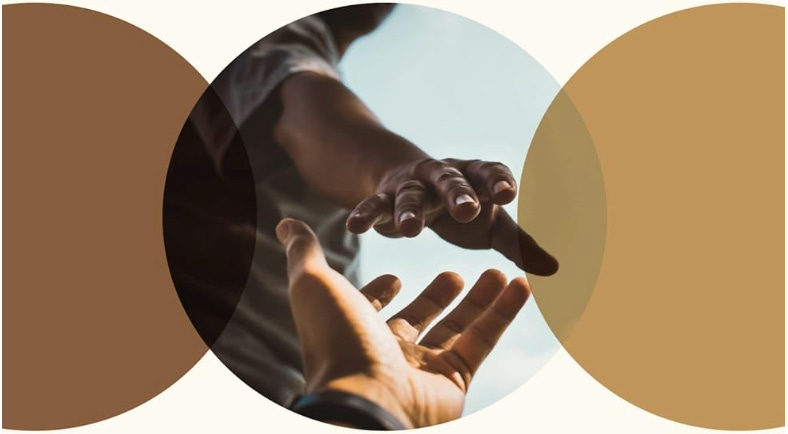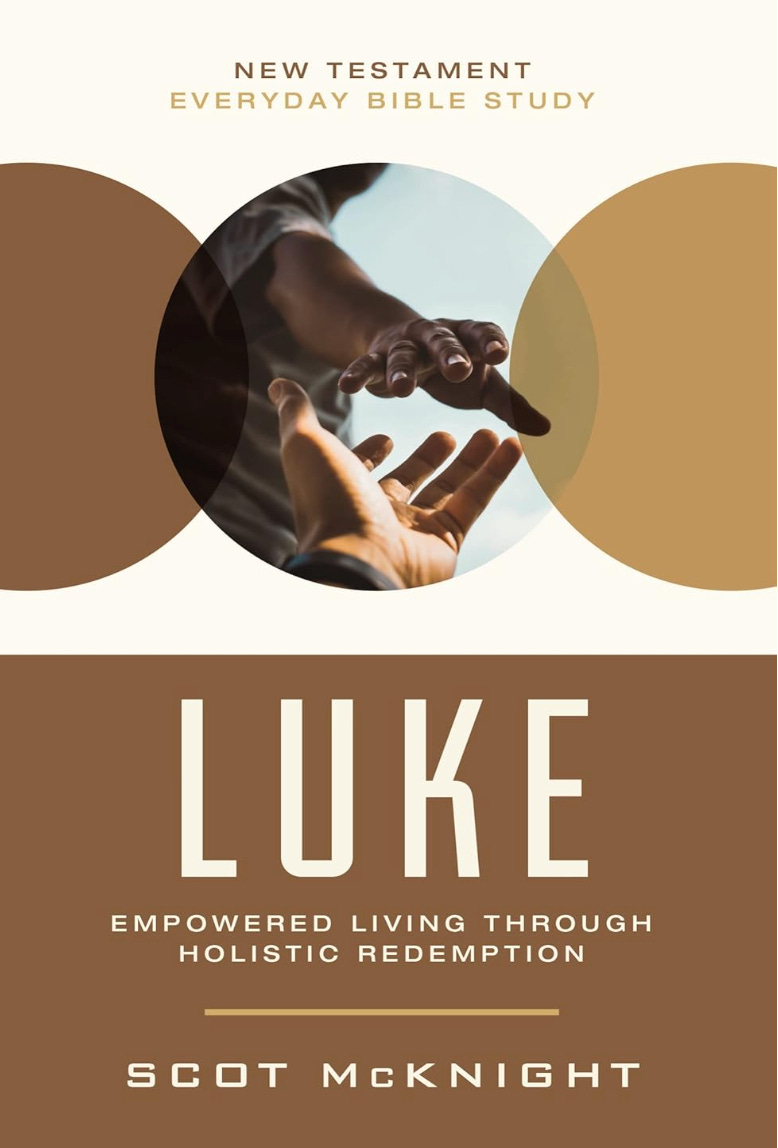From the Everyday Bible Study on Luke, Questions by Becky Castle Miller
Luke 5:1-26
5:1 One day as Jesus was standing by the Lake of Gennesaret, the people were crowding around him and listening to the word of God. 2 He saw at the water’s edge two boats, left there by the fishermen, who were washing their nets. 3 He got into one of the boats, the one belonging to Simon, and asked him to put out a little from shore. Then he sat down and taught the people from the boat.
4 When he had finished speaking, he said to Simon, “Put out into deep water, and let down the nets for a catch.”
5 Simon answered, “Master, we’ve worked hard all night and haven’t caught anything. But because you say so, I will let down the nets.”
6 When they had done so, they caught such a large number of fish that their nets began to break. 7 So they signaled their partners in the other boat to come and help them, and they came and filled both boats so full that they began to sink.
8 When Simon Peter saw this, he fell at Jesus’ knees and said, “Go away from me, Lord; I am a sinful man!” 9 For he and all his companions were astonished at the catch of fish they had taken, 10 and so were James and John, the sons of Zebedee, Simon’s partners.
Then Jesus said to Simon, “Don’t be afraid; from now on you will fish for people.”
11 So they pulled their boats up on shore, left everything and followed him.
12 While Jesus was in one of the towns, a man came along who was covered with leprosy. When he saw Jesus, he fell with his face to the ground and begged him, “Lord, if you are willing, you can make me clean.”
13 Jesus reached out his hand and touched the man. “I am willing,” he said. “Be clean!” And immediately the leprosy left him.
14 Then Jesus ordered him, “Don’t tell anyone, but go, show yourself to the priest and offer the sacrifices that Moses commanded for your cleansing, as a testimony to them.”
15 Yet the news about him spread all the more, so that crowds of people came to hear him and to be healed of their sicknesses. 16 But Jesus often withdrew to lonely places and prayed.
17 One day Jesus was teaching, and Pharisees and teachers of the law were sitting there. They had come from every village of Galilee and from Judea and Jerusalem. And the power of the Lord was with Jesus to heal the sick. 18 Some men came carrying a paralyzed man on a mat and tried to take him into the house to lay him before Jesus. 19 When they could not find a way to do this because of the crowd, they went up on the roof and lowered him on his mat through the tiles into the middle of the crowd, right in front of Jesus.
20 When Jesus saw their faith, he said, “Friend, your sins are forgiven.”
21 The Pharisees and the teachers of the law began thinking to themselves, “Who is this fellow who speaks blasphemy? Who can forgive sins but God alone?”
22 Jesus knew what they were thinking and asked, “Why are you thinking these things in your hearts? 23 Which is easier: to say, ‘Your sins are forgiven,’ or to say, ‘Get up and walk’? 24 But I want you to know that the Son of Man has authority on earth to forgive sins.” So he said to the paralyzed man, “I tell you, get up, take your mat and go home.” 25 Immediately he stood up in front of them, took what he had been lying on and went home praising God. 26 Everyone was amazed and gave praise to God. They were filled with awe and said, “We have seen remarkable things today.”
It has been said many times because it needs to be repeated: redemption for Jesus cannot be reduced to forgiveness of personal sins so we can go to heaven when we die. In the Gospel of Luke redemption is holistic: forgiveness (check), healing (check), exorcisms (check), restoration to society (check), future kingdom (check). Not just one or two but each and more than even these. In our passage, Simon (Peter) is forgiven and called, the leper is cleansed and sent, and a paralyzed man is cured and praises God. No one is left where they were for those who experience redemption are drawn into the kingdom mission of Jesus.
The mission of Jesus occurs in the midst of crowded places, and this comes through our text at several places (5:1, 15, 17, 26). Perhaps Luke wants his readers to know Jesus’ mighty acts did not occur behind closed doors or out in some barren wilderness. No, what Jesus did was seen by many. In fact, people came to Jesus to hear him speak “the word of God” (5:1).
Redemption calls
Every person Jesus redeems is called to participate in the kingdom. Some turn their professions into gateways to the kingdom, others are more directly called into the church’s ministries. It does not matter: each person is called to exercise their gift in the kingdom. Simon is about to become a kingdom agent himself, and Luke will describe this scene with noticeable brevity.
Simon (not yet Peter until verse 8) fishes the Sea of Galilee. Jesus discovers two boats on the shore, gets down into one of them and, while sitting, teaches a crowd of people. Luke turns rather suddenly to Jesus instructing Simon to take a boat out into the water and drop his fish nets. Simon informs Jesus they had fished all night and caught nothing but, he surrenders, “because you say so, I will let down the nets” (5:5). A haul of fish overwhelms Simon’s nets so he solicits another fishing boat for support. In Luke’s economy of words again Simon suddenly confesses his sins! Perhaps this can be explained as Simon being overwhelmed by the presence of Jesus and the power of God at work through Jesus. However explained, self-recognition forms the heart of faith.
Redemption of Peter, still in the boat on the water, turns into Jesus’ prophecy that “from now on you will fish for people,” and the word used by Luke suggests “catching alive” (5:10). Peter’s mission is narrated in the Book of Acts. They get to shore and three men – Simon, James and John (Andrew is not mentioned here) – and they “left everything and followed” Jesus (5:11).
Redemption cleanses
Kingdom redemption heals a person of diseases and disabilities, and restores such persons to social status. Leprosy had the power to alienate a person from society and status but as Amy-Jill Levine observes, “contrary to Hollywood and popular preconceptions,” the kind I heard in Sunday School class and sermons, the leper “was not confined to a cave or banished from the town” (Levine-Witherington, Luke, 140). He had some kind of very serious scaly-skinned symptom and wanted to be healed. Jesus cleans the man’s skin with a touch of the hand, which touching does not violate the law but instead is an act of mercy, which is always expected. Jesus then instructs the man to go “to the priest and offer the sacrifices” as “a testimony to them” (5:14). Jesus, it can be said, was a contagion of redemption empowered by the Spirit (3:22; 4:1, 18) as well as his intimacy with God. Even still, Jesus’ kingdom ministry exhausted him so he sought quiet, thin spaces for recuperation (5:16).
Redemption cures
We now encounter the first mention of Gospel stereotypes, namely, the “Pharisees and teachers of the law” (5:17). This must be said here and often: the Pharisees were analogous to activist judges because they democratized the law of Moses by articulating rules and procedures that, if done, enabled ordinary Jews to be observant of the law. They are best described as expanders of the law in order to enable others to observe it. They were, in some senses then, progressives (not picayune fundamentalists and brow-beating moral cops). But they did not (always) agree with Jesus, and what they differed on became sources of tension.
They heard of Jesus. They want to know what’s up so they show up in Capernaum where Luke tells us the “power of the Lord was with Jesus to heal the sick” (5:17). Some men can’t get a paralyzed man to Jesus because the crowds are too thick (at Simon Peter’s home, I envision) so they climb on the roof, dig through it, and lower the man to Jesus. Jesus’ response is to say “your sins are forgiven,” which is one element in the man’s redemption (5:20). The Pharisees don’t see how any human can declare forgiveness so they call out Jesus, which gives him the opportunity to respond. (Lesson, don’t bait Jesus.)
Sin, sickness, and suffering are intertwined in that world (cf. John 5:14; 9:2; Luke 13:1-5), but it is a very serious mistake to connect them all the time. (Think of Job.) In fact, as Levine and Witherington state with biblical examples, the Jewish people believed they were “under God’s special protection” (Levine-Witherington, Luke, 145). The challenge comes to Jesus either to speak the word of forgiveness or show the power of God to heal the man (5:23-24). He, Daniel 7’s Son of Man, wants them to know he has the power to forgive, and heals the man to prove it.
No one remains where they were when they encounter Jesus’ kingdom mission. The formerly-paralyzed man becomes someone who praises God as the witnessing crowds sing a praise song (5:25-26). Redemption, never leaving the redeemed alone, leads to worship.
Questions for Reflection and Application
1. How does Luke illustrate in this passage each of these elements of redemption? (Forgiveness, healing, restoration, future kingdom.)
2. What do you observe about the calling to discipleship in this section?
3. What do you learn about Jesus and healing in this section?
4. How does this section shift your view of Pharisees and teachers of the law?
5. What all is involved when someone joins Jesus in his kingdom mission of holistic redemption?






Thank you, Scot! Your Everyday Bible Study books, with Becky’s questions, are always worth the read, and its harvest of good wisdom! Today, you helped me sort some things out for Sunday.
Thank you